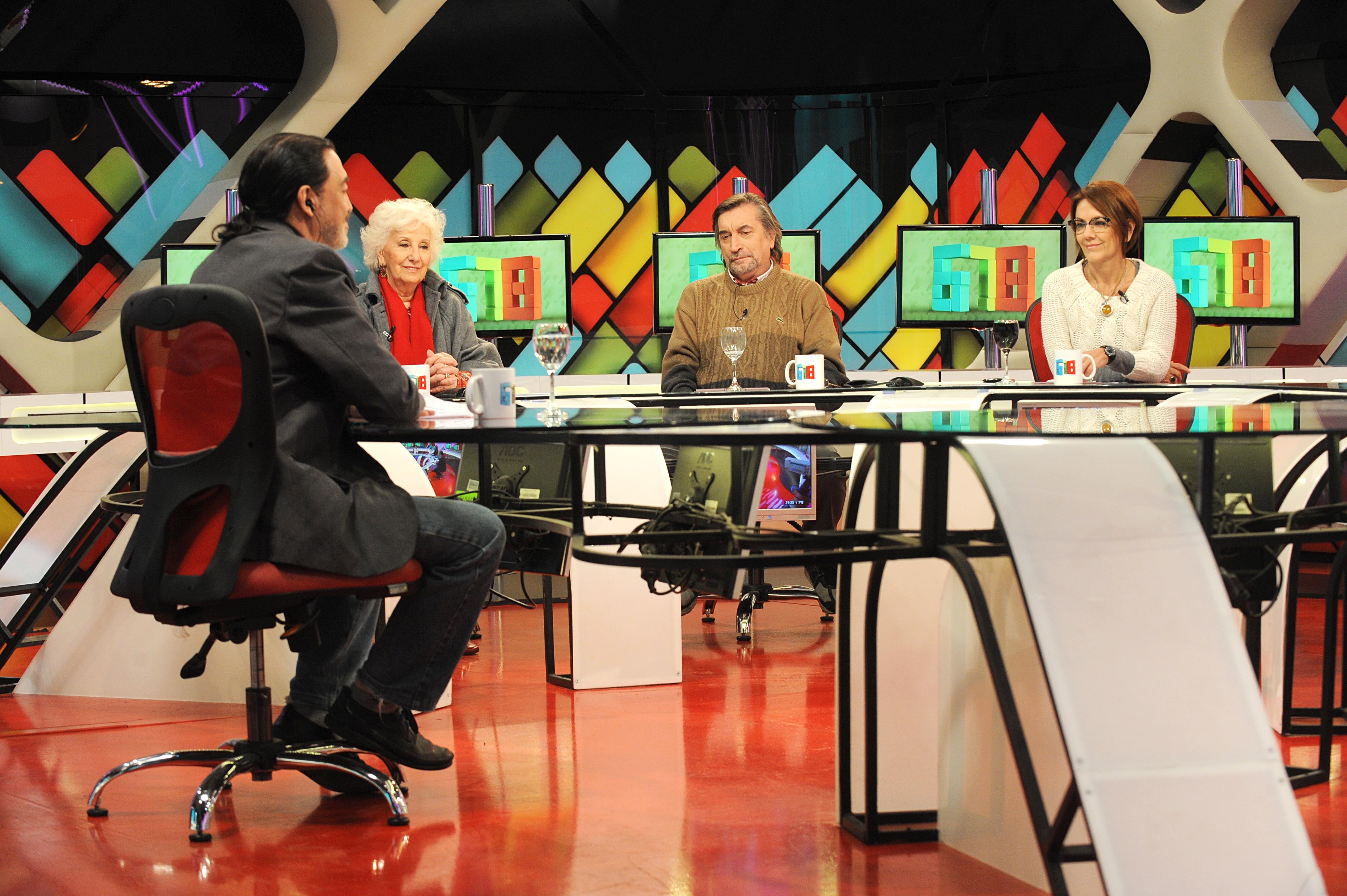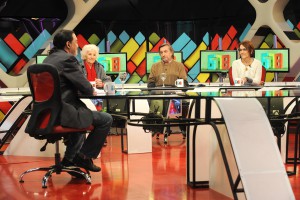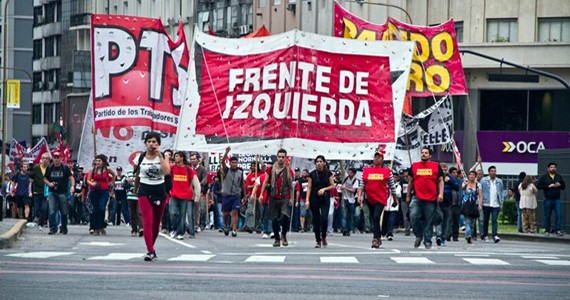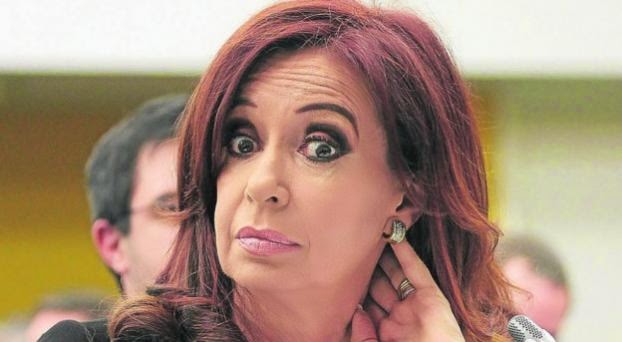The left and the Kirchnerist “legacy” in the field of cultural struggle
The “Kirchnerist (K) fairy tale” (or “el relato K”), the idea that the country is being contested by the austerity of the right and the nationalism and populism of the left, reproduces that same old peronist ideology that split the political spectrum in two. In so doing, kirchernism makes itself the “owner” of the “left” half of that spectrum. In general, the Argentine left has capitulated to this scenario by slyly trying to enter as background performer in a script played by other protagonists.
By Eduardo Sartelli (Director of CEICS)
The battlefield of cultural struggle is, probably, where kirchnerism has produced its best results. Having had a late beginning (the main propagandistic apparatus really only develops after the 2008 conflict with the agricultural sector), it only ended up transforming the axis of the 2015 electoral campaign when during the runoff voting phase (ballotage) a desperate Scioli resorts to conducting a “negative campaign” as a last attempt to curb the humiliating loss. Ultimately, it was the “fairy tale” (the pejorative name imposed by the opposition that evokes the production of a fantasy which the K government preferred to call its “epic,” or simply, the “true” story), which is to say, kirchnerist ideology, that began to be promulgated when the situation started to go awry, a la political line “Aire y sol”—the way that political analyst Jorge Asís christened Scioli’s political line (sciolism). What is still pending is a detailed analysis of the kirchnerist ideological structure, its different political lines and variations, its intellectual personnel and its media machine. Here however we will focus on the paradoxical continuities of that which appeared to have less vitality than the changes which were relatively limited and futureless (the economy) or those that will surely transcend the Macrista government because they themselves already preceded kirchnerism (the social transformations).
Effectively one would have expected that the new government would have taken one or two years to resolve the mess induced by Lavagna and Kicillof, which began with Duhalde, and culminated with sheer madness during Cristina Kirchner’s term, and that therefore it would have been difficult to disarticulate a social configuration that had arrived to stay, a configuration that is the offspring of the social transformations in the past 40 years and that expresses itself politically in the Argentinazo, that is to say, in the “new” social questions raised in Argentina since then (as we will see in the next issue of El Aromo). The aspect that I gave very little chance of survival during this transformation was “the fairy tale” (el relato),” that sloppily constructed falsity built without much measure, that shoddy ideology which contained many lies and very little truths. This is not only because ideological phenomena rapidly suffer the impacts of political transformations, but also rather because as it stands, the “fairy tale” is decidedly inadequate. A proper political ideology always contains a certain dose of truths and lies. This is why it is ideology and not science. But the higher the count of that which is indemonstrable or directly false, the weaker ideology becomes.
For instance, the assertion that the province of Buenos Aires is “paradise on earth,” something which does not hold up to scrutiny, is a reading upheld by the powerboat racer and ex–governor of Buenos Aires province (Scioli)—someone who is capable of making half-baked assertions without turning red in the face. That the kirchnerist economy is marvelous is not even credible from within the crude and scrappy discourse of the most cynical minister of finance that has existed in years. This is why kirchnerism lost the election. Surprisingly, the “fairy tale” has demonstrated (and still demonstrates) an unthinkable vitality, especially with the appearance of the last minute kirchnerists.
“The fairy tale” (El “relato”)
What did the kirchnerist ideological discourse basically consist of? In preventing the return to the 1970’s. That is, in the belief, in the conviction, real or not, that the country was now in new hands, that the long “neoliberal” cycle had ended and the country was now to be governed by a “national and popular left.” The signs that mobilized that symbolism are well known: “Cámpora” (as the opposition of right-wing peronism), the “disappeared” (as the opposition of the dictatorship), “memory” (as the counteraction of impunity), “industrialization” (as against neoliberal “financialization”), “protectionism” (as the anti-neoliberal recipe), “Statist intervention” (again, neoliberalism as the enemy), “the power of the people” vs. institutions (as such the necessary “democratization” of the justice system and other government bodies), the struggle against “monopolies” (in particular the media communications law against the Clarín group), the “gendering” of politics (from the supposed “feminism” of Cristina—which she herself made sure to deny—the same-sex marriage law), the “redistribution of wealth” (as against the “menemist” concentration), and so on. What crowned the ideological edifice, then, was a new reading of history, the vulgarization of a reading of history already quite vulgar, that of Felipe Pigna, with new heroes and heroines, that, logically, illustrated a long battle between good and evil, from colonial times to our days, that had culminated as soon as the seat of government was occupied first by “him” (Néstor Kirchner) and then by “her” (Cristina Kirchner).
If we carefully examine each one of these themes, we see that they all emerge in the 2001 crisis. Independently of Néstor and Cristina particular histories, their political agenda was constructed with a pressure that propelled itself on its own and that represented the push of various sectors: the urban petit bourgeoisie, the domestic-market oriented agrarian bourgeoisie (both national and foreign), the indebted agrarian bourgeoisie, the unemployed working class, State workers, other industrial workers, which is to say, basically all the sectors. In short, there was a widespread demand to reconstruct society. That the social pressures ended up in a capitalist re-composition of society is something that was not determined beforehand—since everything depended on the evolution of the economy—but also in the ability of the various components of that boiling social universe to organize a way out of the situation. In these types of situations it is the bourgeoisie that has the advantage, and as such, the results immediately following the 2001 crisis are not surprising. It was the domestic-market oriented bourgeoisie—with the aid of Duhalde and Mendiguren—that led the way out of the crisis. To speak of a “domestic-market oriented bourgeoisie” in Argentina is basically like just saying “bourgeoisie,” with the only exception being the agrarian bourgeoisie. Rushed by the increasing accumulation of the external debts incurred by the state banks—which are the basis of financialization for the agrarian sector—even the latter ended up accepting the tax withholdings, not only because the devaluation created an enormous cost effective cushion for the agrarian bourgeoisie, but also because halting land auctions had become commonplace.
The “fairy tale,” then, had the strength that the economy provided. This is always happens. Obviously politics is important too—even when the economy is not so good—but after all, an important victory in the class struggle usually entails that the economic problems have been sorted out for a good while. In this case, until the economy did not demonstrate that it had something to offer to each and every one of the players in the bonapartist alliance that was inaugurated by Néstor and reached its highest point with Cristina, the aforementioned ideological structure was only partially deployed. It is only after the conflict with the agricultural sector—and also motivated by this conflict—that kirchnerist ideology is most intensely deployed. Let me elaborate.
In 2008 the bonapartist alliance that had kept everyone under its wing suffered its first defections. Logically, before anyone else, the first to go from the fold was the agricultural sector. The moment of debt consolidation long past, already saturated or on its way, the effects of devaluation, and a not very important fall of international prices provoked a crisis whose magnitude was not foreseen by anyone. The conflict with the agricultural sector turned the agrarian bourgeoisie into part of the opposition. After all, it would be forced to become the financial guarantor of the bonapartist arrangement through tax withholdings. The decomposition of the economy from 2009 on (until at least 2012) allowed for the rearticulation of precarious alliances and the need to relaunch the “fairy tale,” which reached its peak with Carta Abierta (the Open Letter Spot) and the “54%.” On the way, many resources were depleted and new ones had to be found, like what occurred with the ANSES (the national security agency). Then came the income tax. It is this last component that resulted in a breaking point from kirchnerism for the employed working class (at least with the sector that is under Moyano but also, increasingly, with the rest of the employed working class). Going further, the currency controls of the US dollar ended up alienating the domestic-market oriented bourgeoisie. If it weren’t for the social welfare plans and the surplus population that lives off of them, Cristina would have finished her term accompanied only by her clique of intellectuals, artists and “journalists,” which first saw its “spring days” with the media communications law (Ley de Medios) onward.
In the midst of that ever-increasing solitude, ideology then became an increasingly more important tool to sustain Cristina and her government. And, more than anything, it is ideology in its less real form—it is ideology in its most perverse instantiation. This is evidenced in the fabricated statistics to the endless affirmations of half-truths and whole lies that resonated within the media apparatus that created rivals out of the newspapers La Nacíon and Clarín. The more deceitful the lie, the less efficient it is, and therefore the more important it becomes to endlessly repeat it through its various channels: Tecnópolis, 6, 7, 8, Fútbol para todos, INCAA, Zamba, cultural centers, the CONICET, blogs, other web pages, social networks, and so on, and more than anything, the State’s national media network. And the money kept rolling to oil and smoothen the entire operation, with the aim of repeating the same tale: to the left of us all that exists is the wall, to the right, everyone else.
The kirchnerists of post-kirchnerism
This was the state of the situation when the results of the first round of the 2015 elections took kirchnerism by surprise. Not only because kirchnerism literally gave the opposition the country (i.e. first the city and then the province of Buenos Aires), but also because Macri beat Scioli with seemingly little effort. In the lapse of time between that fateful Sunday and the second round of elections, Scioli changed, but not in the way that everyone expected: the long and anxiously awaited anti-Cristina confession. On the contrary, Scioli turned even more toward the “K fairy tale.” In fact, he became a fanatic and recited it with fervor. Scioli reproached Macri with concentrating that which the kirchnerist discourse defined as the worst of all evils: the RIGHT WING. The sudden bellicose conversion of that cynical pacifist seemingly ended up sinking Scioli’s position in the polls. But when the prediction was that of a catastrophic finale for the “fairy tale” and its recent convert, the polls showed that in both phases of the presidential election a new kirchernism was being born—the kirchnerism of post-kirchnerism. And it is thus that Scioli was able to harvest almost as much as Macri.
Effectively, that “neo-kirchnerism” was the one desired by all those who dreamed of a kirchernism without Boudou, without Nisman, without Milani, without all of those unnecessary miseries to the “eye” but undoubtedly necessary and proper to all bonapartisms. All of them then ran towards Scioli as the last resort, including all of those that, having ran from those initial terrifying moments (that were now reluctantly but gladly accepted just to ensure that Macri did not win the presidency), had thought they were even further left than the wall and found in that young man with a beard and his “light” Trotskyist discourse (del Caño) an excuse to accentuate their dissidence. But as soon as Macri reared his ugly head all of them returned to “mamas” lap—right behind the limbless father. When we said that the Worker’s Left Front vote (Frente de Izquierda y de los Trabajadores, FIT), with the political program imposed by the Socialist Worker’s party (Partido de los Trabajadores Socialistas, PTS) that the Worker’s Party (Partido Obrero, PO) ended up rapidly copying, wasn’t worth much, this is what we were referring to. The day after Macri’s presidential inauguration, not only was social media replete with mystical deliriums about helicopters and rapid returns, but the entire left rapidly pivoted toward kirchnerism, even reaching the point of surrendering itself to the “fairy tale.” That is, now the left would have to make an anti-macrista front (the name of which is made more palatable for Trotskyist ears and is pompously called by the PO and the TPR—Tendencia Piquetera Revolucionaria—the “Unique Front”) which would include of course, La Cámpora, which is recognized to be very popular and to espouse a combative tradition—both qualities which no one has yet seen. Obviously, in that manner, almost the entire left is simply trailing Cristina: Macri is the RIGHT, and so “she” is the LEFT. Behind that maneuver, the “fairy tale” imposes itself once again: its as if now comes austerity, now comes governing through decree, now comes the devaluation.
Under the discipline of General Fernández de Kirchner
The “Kirchnerist (K) fairy tale” (or “el relato K”), the idea that the country is being contested by the austerity of the right and the nationalism and populism of the left, reproduces that same old peronist ideology that split the political spectrum in two. In so doing, kirchernism makes itself the “owner” of the “left” half of that spectrum. In general, the Argentine left has capitulated to this scenario by slyly trying to enter as background performer in a script played by other protagonists.
Whether it is through “entryism” or the “inheritance,” the argentine left has demonstrated its reverence to peronism long past, and today, to kirchnerism. It is sad to see the comrades from PTS speaking with much reverence on national television shows such as 6, 7, 8 and obeying marching orders without much hesitation. For example, trailing kirchnerism in not engaging in conversations with Macri has meant losing the opportunity to consolidate the FIT as an important independent force in national politics. The situation with the PO is a bit confusing: Solano, on the one hand is affiliated with the PTS (though it seems that he has recently been obligated to return to the fold); Altamira is always trying to make a move, but like always ends up making grand proposals only to remain on the same side, though he has adopted our theory regarding the kirchnerization of the PTS which ended up exploding in his face during the internal elections of the FIT. It is obvious that the PO’s defeat in the primary elections of the FIT hit them quite hard and they have not tried to retake the reins of the Front. In this way, the FIT finds itself adrift in the political ocean—commanded by the PTS—which is directing the Front straight to la Cámpora.
This time it is not simply about a new subordination of the left to the peronist discourse. What we are evidencing is both political blindness and a political fraud. Blindness because if the peronist “tale,” as ideology, ended up being much more efficient than the kirchnerist tale, this was due to its much more substantive and truthful content. For that reason, the working class ended up invigorating the peronist “movement.” To give that power to la Cámpora, which is a purely state-based phenomenon, begins to demonstrate the foolishness of the move. If the PTS thinks that by making itself subordinate to la Cámpora it will gain anything let us state that they are mistaken. But that mistake reaches the level of a “fraud” (in reality, as we had been saying for a long time, it deepens it) when it ends up giving its back to the thousands of militants that compose the PTS party, the other parties that compose the FIT, as well as the thousands of other groups and independent militants that contributed to creating the image of del Caño as President even without fully agreeing with the decision. In short, the PTS proceeds like any other bourgeois party: you voted for me, and now I do what I want.
In light of this, we demand, once again, the convocation to a congress attended by the militants that compose the FIT and of all parties and groups that sustain the Front and support it. That gathering should aim to determine new strategic positions for this phase that is before us. If, for example, the PTS wants to insist in calling itself the Socialist Worker’s party—without living up to its nominal expectations—and if the rest of the parties in the FIT do nothing to curb this then maybe the time has come to rethink the utility of such Front and assess its possible future. If, on the contrary, the most dangerous kirchnerist inheritance, the “fairy tale,” ends up imposing itself, then it will end up incapacitating the left for a long period and negating its possibility to create a truly socialist movement of the people.








